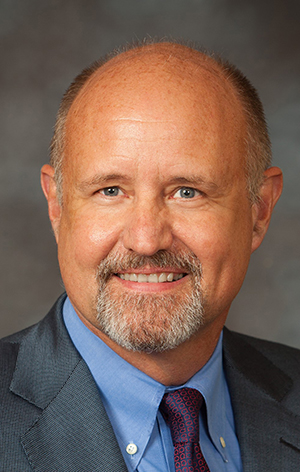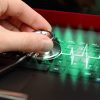In a rapidly evolving healthcare industry, Abbott wanted to gain fresh perspective on what is weighing on cardiologists, physicians and specialists to help us better meet their needs—and those of their patients. Not surprisingly, we uncovered concerns among cardiac patients, both those who already were diagnosed with cardiovascular disease prior to the pandemic and those who might be going untreated. Findings from Abbott’s HEART MATTERS study underscore the fact that providers were right to worry about the impact of COVID-19 on their cardiac patients as we wrapped up a difficult year—but the findings also shed light on new opportunities in 2021.
HEART MATTERS: Physician Perspectives
The HEART MATTERS study revealed widespread concern that patients battling conditions like heart failure and cardiovascular disease haven’t been receiving the care they need during the pandemic, whether it’s due to provider office closures or a fear of exposure while seeking treatment. Of the cardiologists surveyed, three-fourths are worried that the pandemic has prevented heart failure patients from managing their condition.
Their concerns were compounded when they considered their more vulnerable and traditionally underserved patients. More than half of cardiologists said they’re concerned about heart failure developing at an increasing rate among patients with pre-existing conditions such as obesity or diabetes, patients who are 65 and older, Black or African American patients and low-income patients.
Doctors also reported that more challenges remain to be seen: 78% expressed concern that we haven’t seen the full extent of COVID-19’s impact on cardiac health and outcomes. I share all these concerns. If we don’t take action now, existing disparities may get even worse for patients who need care the most.
Fortunately, we also heard that physicians are willing to embrace new methods of care delivery, including virtual care and remote monitoring. They may still be building up their offerings—nearly half plan to adapt or expand their virtual care capabilities—but they recognize the importance. In fact, more than two-thirds of cardiologists believe that remote monitoring would not only facilitate a more proactive approach to care, it could help improve overall outcomes through early detection and mitigation.
Remote Monitoring in Action
In general, cardiologists and other physicians are looking for better ways to treat patients with congestive heart failure—it’s difficult, given the complexity of the disease and the comorbidities patients often have. And, when we see patients with heart failure, we’re already facing limitations even in the office environment. For example, we perform a certain sequence of maneuvers during physical exams that are designed to tell us how much fluid the patient has in their body. It’s not perfect, but trying to mimic the maneuvers with a patient over Zoom is even less effective.
This is one of the Achilles heels of virtual medicine. It’s great to be able to connect with your physician virtually and discuss how you’re feeling. But with heart failure, most people who are getting sick are feeling okay until the last minute. As their condition worsens, they can’t—and we can’t—tell until it’s serious. We need access to more accurate data, whether in person or remotely.
Bringing in novel technologies can help. For heart failure patients, one such technology allows physicians to remotely measure and monitor a patient’s pulmonary artery (PA) pressures, which provide an indication of fluid retention in the lungs caused by worsening heart failure. The system uses a sensor to measure PA pressures and provides daily updates to the care team, offering a way of identifying or flagging underlying problems with their heart failure.
In the past, we couldn’t get this type of data outside the cath lab or ICU. Now, we can get it no matter where we or our patients are located. Additionally, the care team can make immediate adjustments to medication or other forms of treatment as well as watch the effects of those adjustments in real time. And, neither the physician nor the patient needs to be in the office environment to make it happen. This is the type of innovation that makes virtual medicine intelligent—and it changes lives.
The Impact of Patient Empowerment
Heart failure patients are literally and figuratively drowning. When people with heart failure come into the hospital, the fluid in their lungs is causing the sensation that they are drowning. They can’t breathe, which is the most anxiety-provoking symptom a human can experience. Many times, they don’t understand what’s happening or why. After several days in the hospital and a diagnosis, they want to avoid experiencing it again.
Introducing the ability to monitor vital health data remotely changes everything, creating an opportunity to prevent potential risks before they escalate into a cardiac event or hospitalization. We see a common cycle with these patients: Two or three times, the care team will respond to their PA pressure data with adjustments to their treatment, resulting in a successful intervention. Then, after that, they start to take back control of their lives.
Right now, that might simply mean they have greater peace of mind—they can receive care without leaving their home. But, during more normal times, they’ll get their equipment and go to the park with their grandkids. They’ll get on a plane and enjoy a vacation. They get to experience life without fearing they’re risking their life.
Remote monitoring makes a difference for physicians as well. The importance of healthcare providers being able to take care of themselves as they take care of patients has been thrown into sharp relief during this pandemic. Our conditions now are extreme, but when the pace has slowed, physicians also will be resuming a more regular life. With remote monitoring technologies, we also can go on vacation—without worrying that we’re compromising our ability to provide care to our most vulnerable patients. I have managed a patient’s diuretics while traveling—and it’s a marvel that I can do so more accurately with today’s remote monitoring technology than I could have in a fully equipped lab 15 years ago.
What Cardiologists Need to Do
The first step with virtual care is simply to embrace it and the technologies that enable it. This is the time to learn how to do things differently, because we will have to do things differently. And we have to understand the intelligent innovations that can bring a level of care to virtual encounters that could never be done otherwise. We have to act like we’re in the 21st century, because we are. We can safely implant sensors in humans and transmit the data from anywhere.
Further, it’s time for cardiologists and all physicians who care for patients with heart failure to adopt the technology and tools piling up at our doorstep. We’ve been moving steadily in this direction for years, and the pandemic has only accelerated the pace and the urgency. As physicians, we can keep our patients safe and stable remotely through a virtual medical delivery system, and we have a moral imperative to do so.







